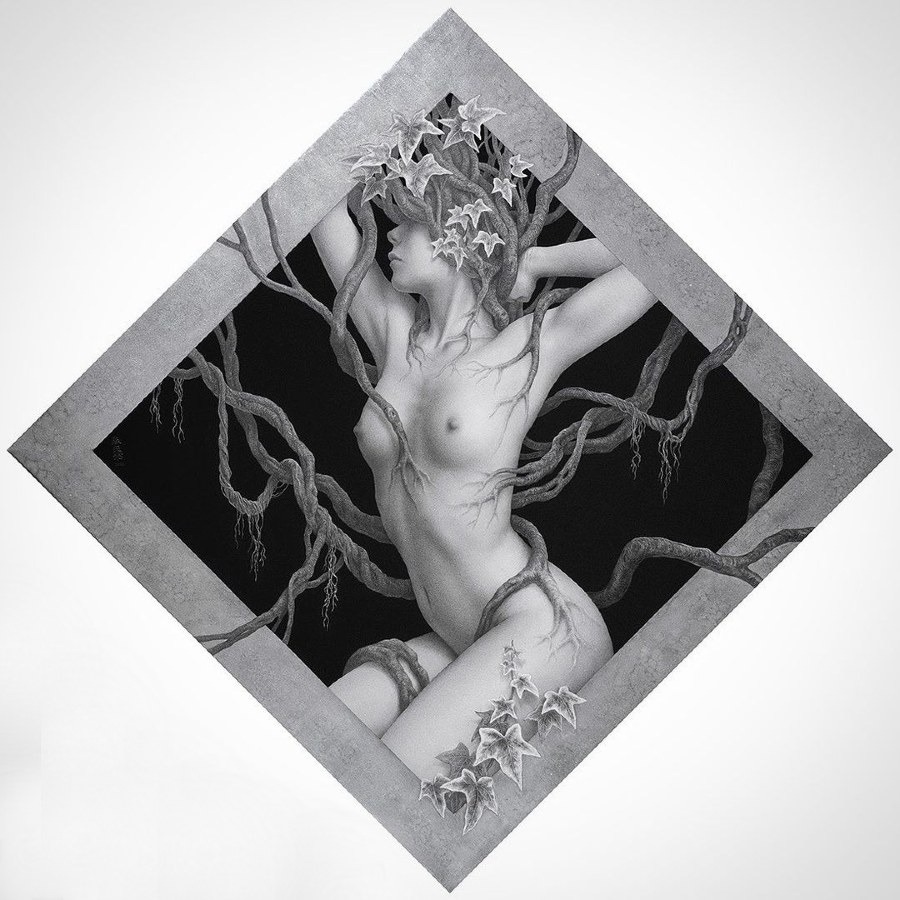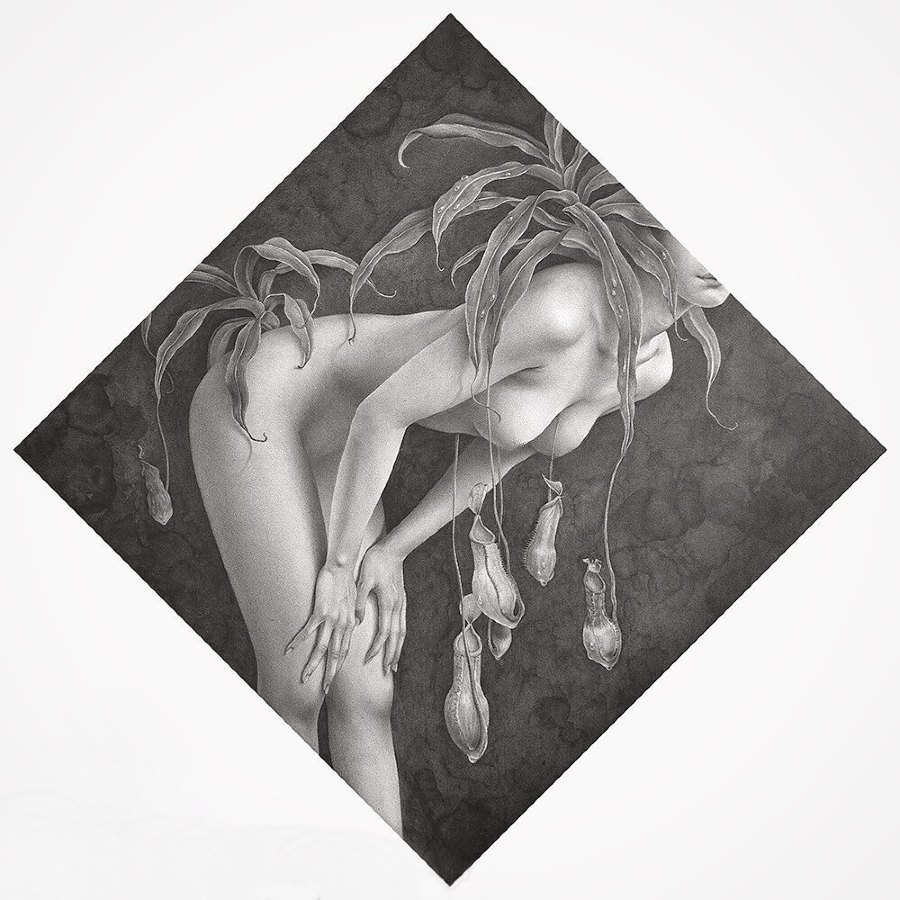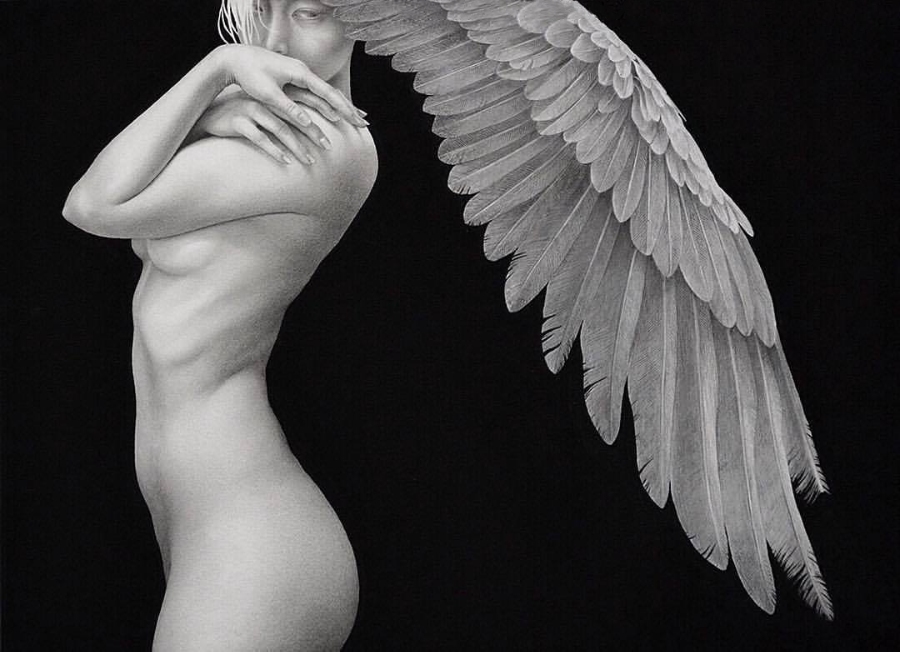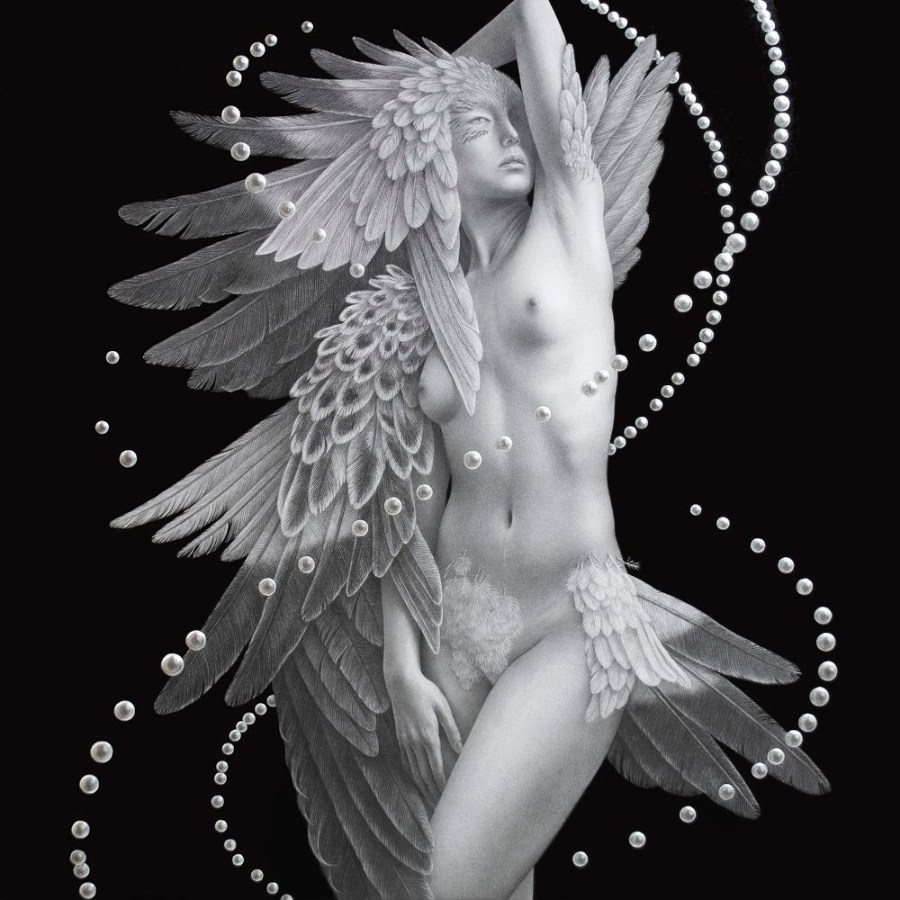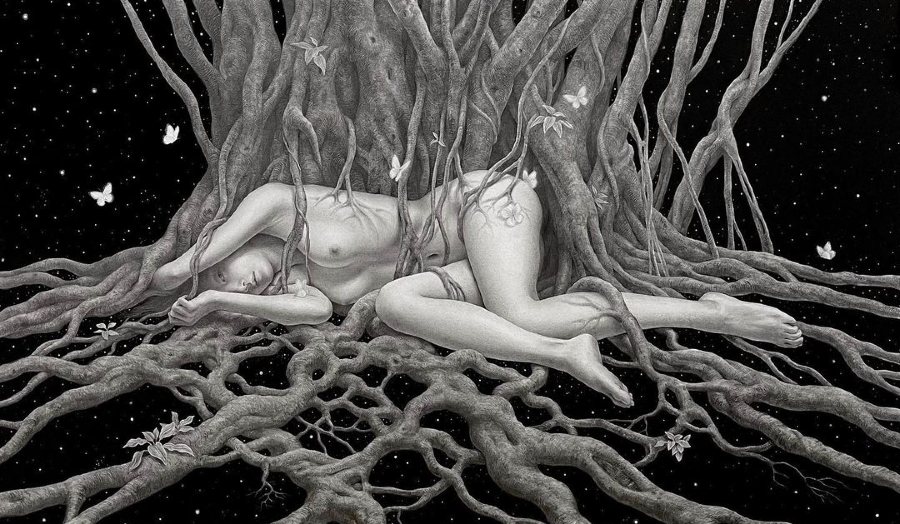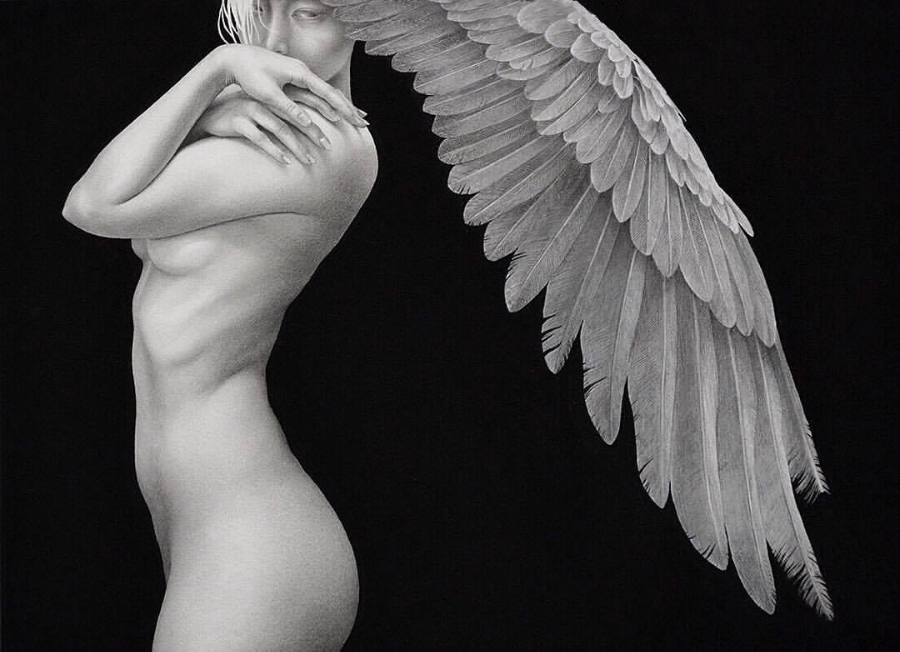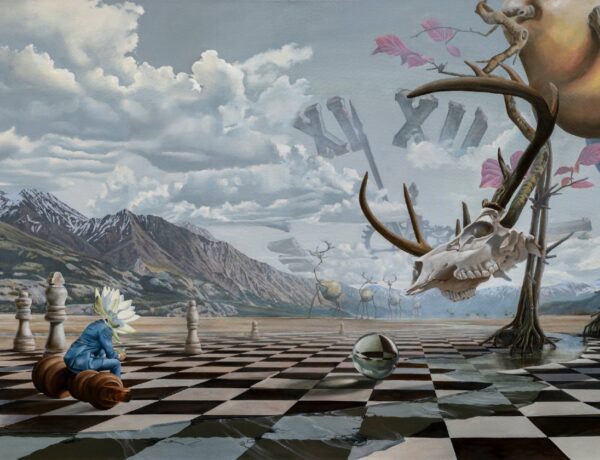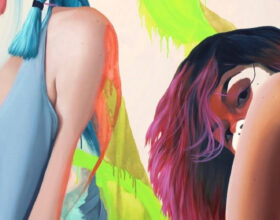Whether a dandelion snakes through a hairline fracture in a concrete sidewalk to revel in solar salvation, or seismic chasms in the darkest depths of the earth redistribute and propel fertile nutrients upward, life always finds a way to flourish. Even in death, all is – in one way or another – reborn. Using utterly unpretentious graphite to elegantly render the life-death cycle of hybridized organisms on canvas, Amahi Mori’s go-to drawing material takes on greater significance because it just so happens to be a relic of ancient beings.
Growing up in Japan – which is rich in botanical and wildlife wonders – triggered my love for natural creatures and reverence for the perfect laws of nature.
Indispensable to the Japanese creative’s art practice, the soft silvery carbonaceous mineral was formed billions of years ago deep beneath the Earth’s crust. Scientists theorize that graphite (otherwise known as ‘graphein’, the Greek term for ‘to write’) is the tangible metamorphosis of dead plants and animals. How providential, then, that Amahi Mori so skillfully manipulates prehistoric crystalline carbon atoms into beguiling artistic incantations that pay tribute to the guardian spirit of creation and eternal rest. We are honored to present this exclusive interview with a masterful mark-maker whose surrealistically nuanced art both elevates and venerates the mystical forces of the natural world.
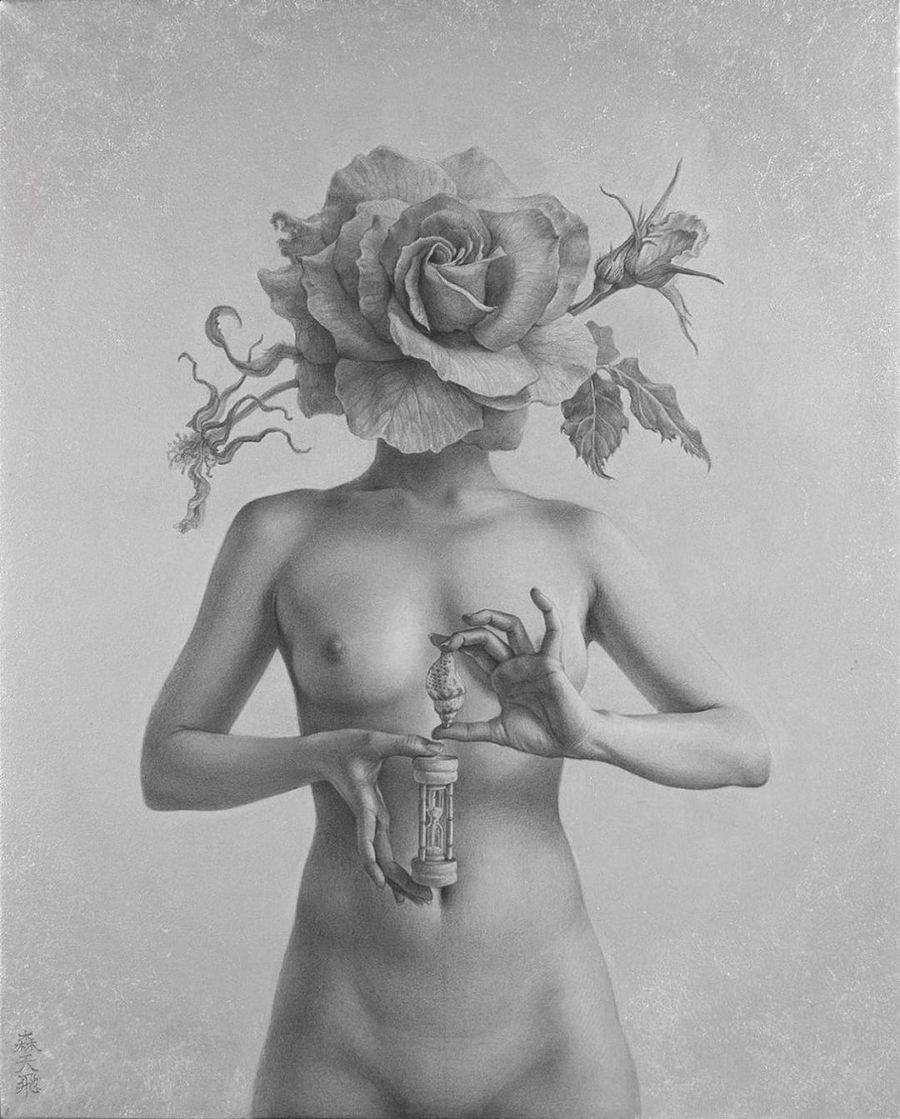
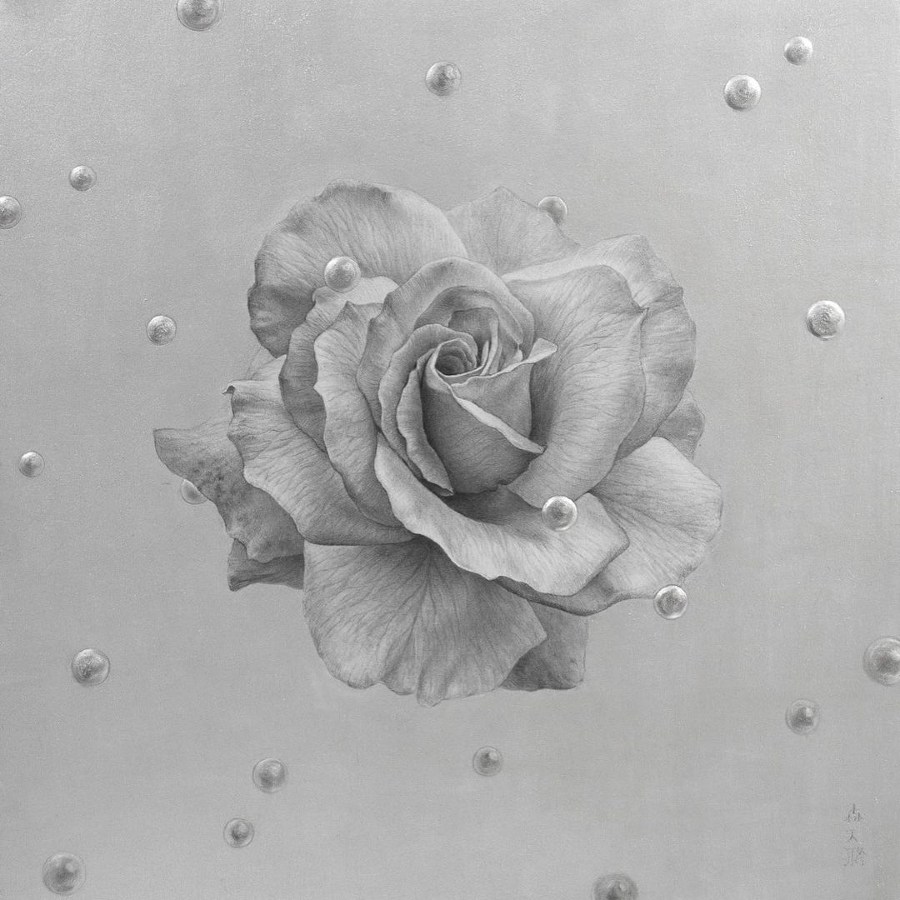
Rather than creating a self-portrait, I’m self-projecting the human figure that I draw in my artwork. It’s difficult to put into words precisely why I’m drawing it…perhaps there’s no real answer. It’s like asking, “Why am I alive?” It’s hard for me to say why.
INTERVIEW WITH AMAHI MORI
Japanese translation generously provided by Hope Doe.
Your work scintillates with a mystical essence that compels the beholder to take pause. What kind of inner alchemy is at play when you manifest your imagery?
My artwork is under my own control but at a certain point – particularly when I am in a state of extreme concentration while drawing – I release control to something else. There are moments when I feel as though I am channeling something divine through my hand or pencil. It’s at that time when I feel as though my work ends up completing itself.
While engaging in the artistic process, do you believe that something happens to you at a cellular level?
I want the human figure in my artwork to seem real. While drawing, I am aware of my own physical sensations. That energy is then transferred into the form that manifests on my canvas. Recognizing that, I am reminded of my own existence – which is important – but it’s not the only thing that matters.
There is one main thing that I bear in mind while engaged in the artistic process; I draw with the weight of my body, bones, muscles, internal organs, blood, etc. That weight – that awareness – resonates within my own body. The female figures in my works represent parallel thoughts, dreams, and some emotional movements. Life is not composed solely of the physical body alone.
If I had painted the nude body in color, I think my artworks would have been more erotic, and that is not where my interest lies.

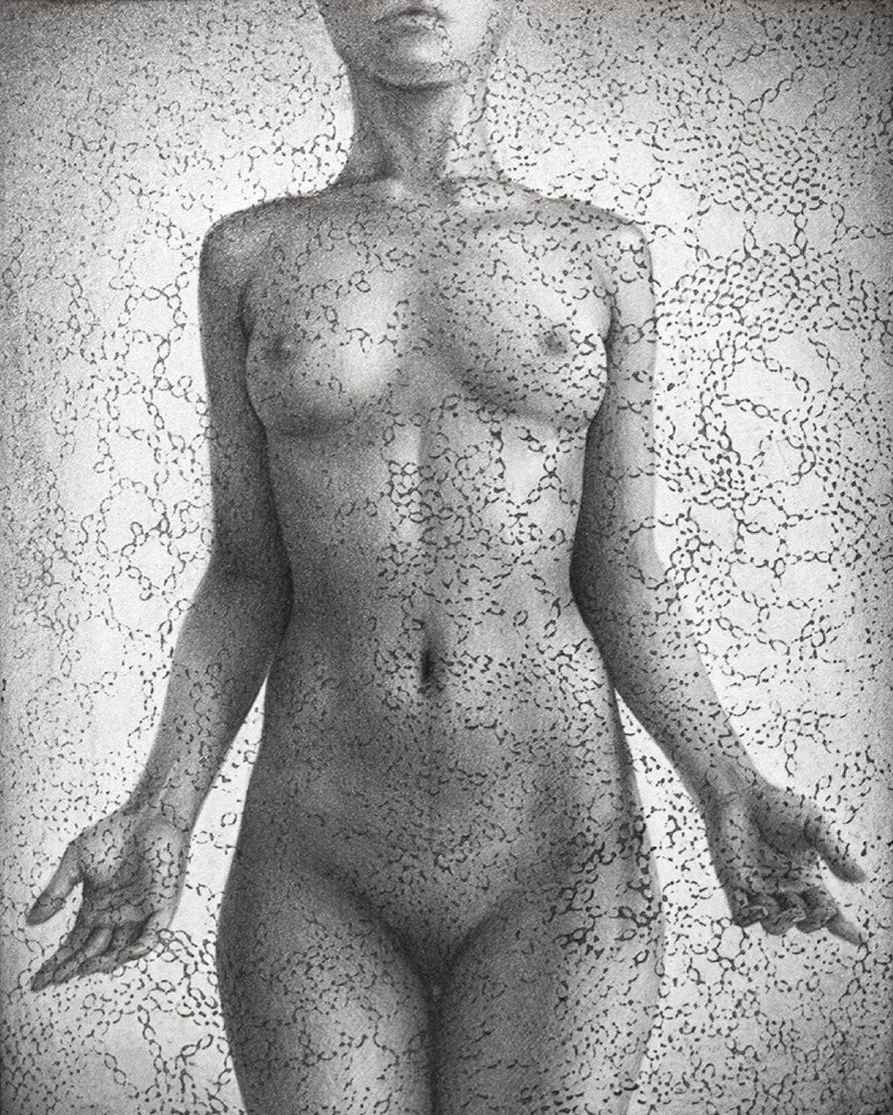
The resplendence of your work – which shines despite a very limited palette – is largely due to the extraordinary level of intricate detail that you include. Please offer insight into the time commitment necessary to bring an idea to fruition.
I draw every day and create approximately 20 new works each year, which is by no means a large number. I don’t want my pencil drawings to be flimsy, so I layer them, repeatedly drawing over and over again as if I were building up an oil painting. As you can imagine, each work requires a great deal of time to complete.
Graphite is generally regarded as a humble art material, yet you finesse it in an impossibly ethereal manner. What makes it such an essential medium in your creative toolbox?
Drawing with pencil is familiar to my hands; I can convey exactly what I want. I believe it is the best artistic material for me. I used to study oil painting at art school and really enjoyed creating colorful work, but I found myself playing with vibrant pigments like an abstract painting. While I love painting colorfully, it conveys too many words and sometimes imbues a work of art with an unintended atmosphere.
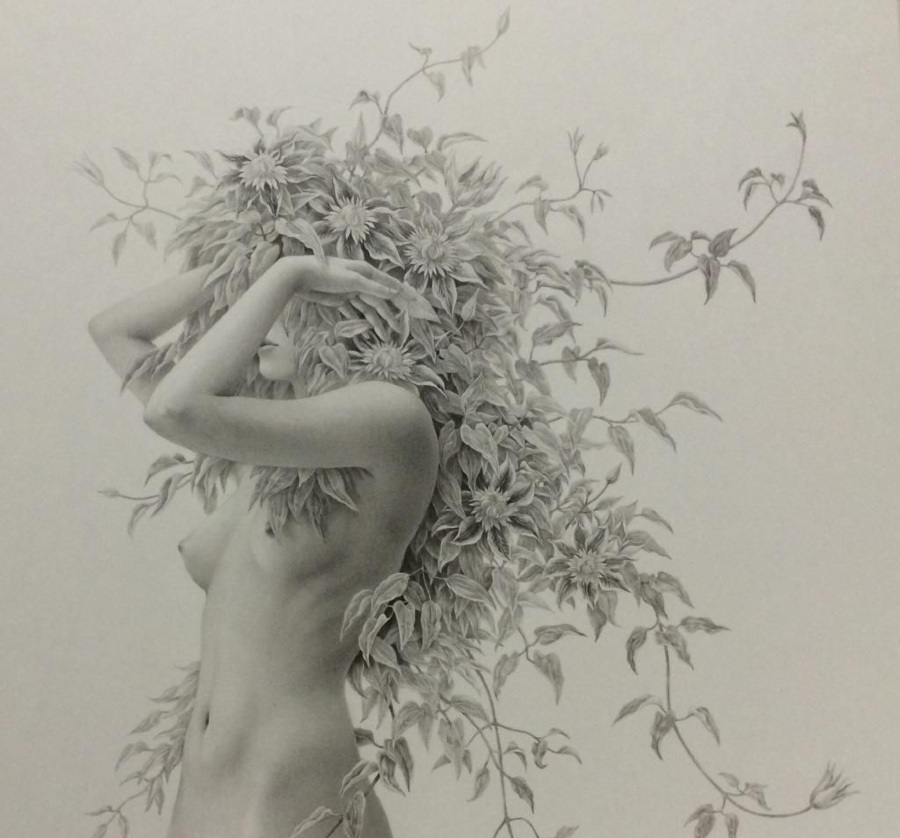
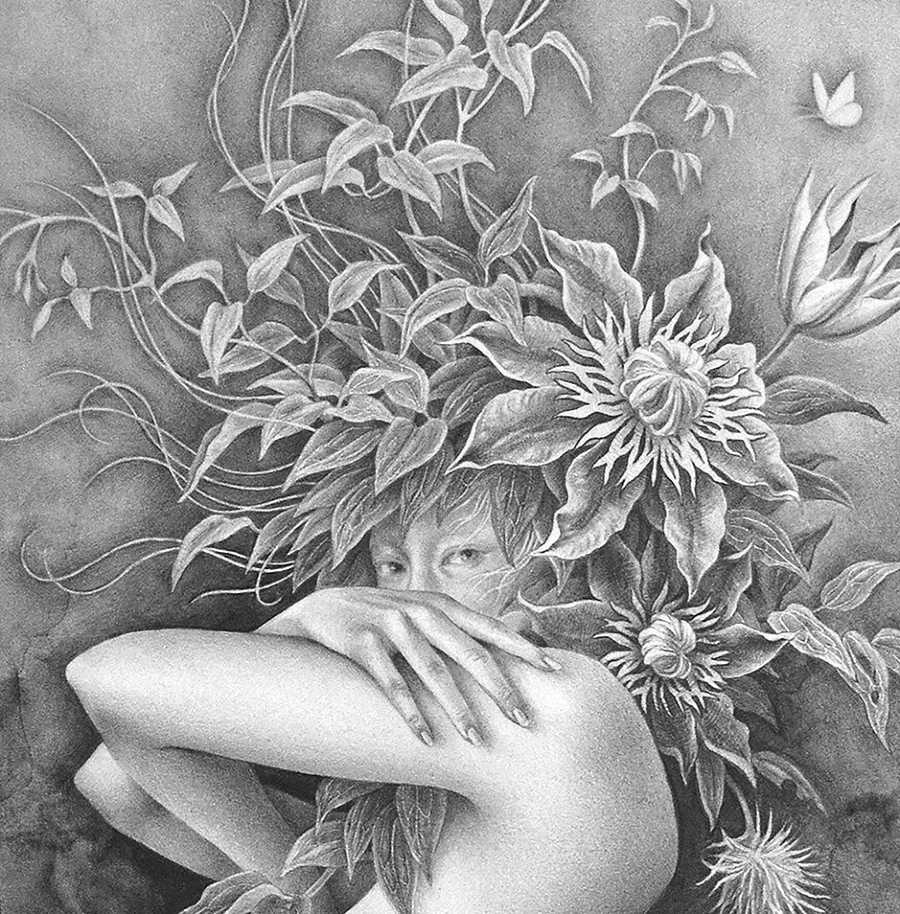
There are moments when I feel as though I am channeling something divine through my hand or pencil. It’s at that time when I feel as though my work ends up completing itself.
When a visual narrative is devoid of color, smoke and mirrors fall away. Does graphite enable you to convey the ephemeral nature of your figures – and perhaps even the fragility of their emotions – more effectively than other mediums?
I stopped using colors so that I could precisely – and in great detail – capture my creative vision on canvas. If I had painted the nude body in color, I think my artworks would have been more erotic, and that is not where my interest lies. Pencils and monochromatic acrylic gouache enable me to depict the nude figure in a straightforward manner, purely as a body rather than as a sexual object.
Without color on your canvas, the technical merit of every single mark on your canvas becomes very apparent. Is that one way that you challenge yourself to constantly expand your drawing skills?
I refuse to compromise my craft. I constantly hone my drawing skills to add more charm, persuasiveness, and even tension to my artwork. Working monochromatically eliminates deception.
I am paying homage to all living things in my art. The human figures that I draw are pure life forms that co-exist equally with plants and insects. They are meant to be organisms that contain hidden personal information.
Botanicals and natural elements are typically highly pigmented, but – in most cases – you render them using the same neutral graphite palette as you favor for the human form. Is that an atmospheric or detail-oriented creative decision?
With respect to plants and insects, pencils enable me to concentrate on the detailed depiction that I am aiming for. I believe that capturing the many subtleties of mother nature’s creatures is akin to making sense of the mystery of life.
From skin texture and pearlescent sheen to patterning and subtle shading, your command of pencil is quite admirable. What drawing techniques do you employ to create such distinctively refined images?
I am always eager to challenge myself. I use varied drawing techniques that change, depending on the piece that I am working on. Of course, lead hardness and hand pressure enable me to manipulate the shade of the graphite. Among the many things that I do, sometimes I create a smooth texture, almost as if I painted it with a brush. Other times, I employ pointillism, or – through hatching – it may seem as though I’ve engraved my canvas.
I don’t think that nudity in artwork is obscene or should be hidden.
Your figure drawings are partially based on your own body – as well as supplemental reference photos – but you have expressly stated that you don’t create self-portrait art. Is it bizarre, or empowering, or even validating to know that certain aspects of an image are an extension of your physical form?
It is true that I use my own body as reference material for my artwork, but I view my physical form as a tool that enables me to manifest my artwork. The figure in my completed work is not the visual equivalent of my own body but rather like a stranger’s body. At the same time, however, I am self-projecting the psychological part of the female figure.
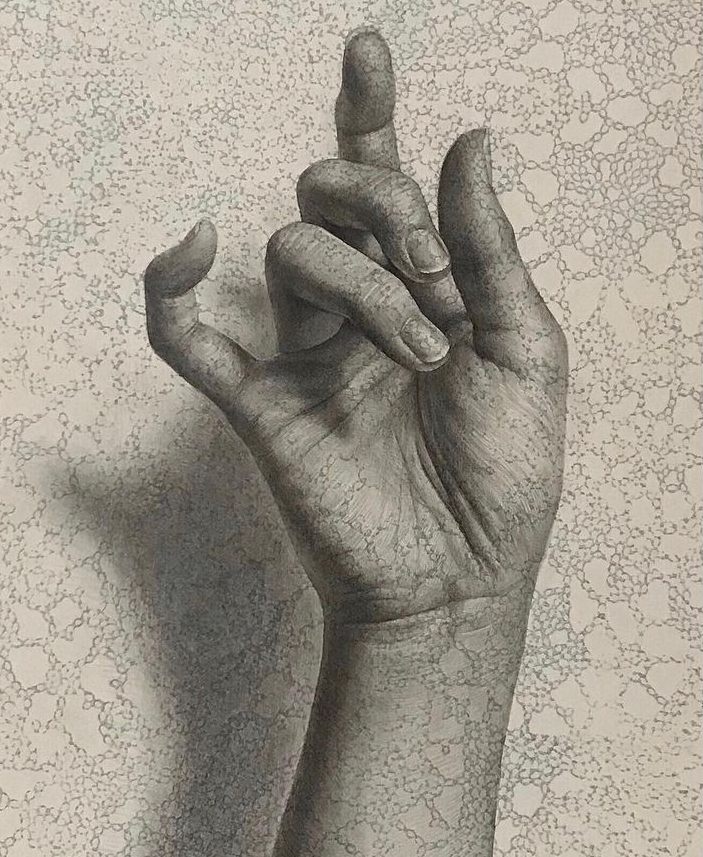
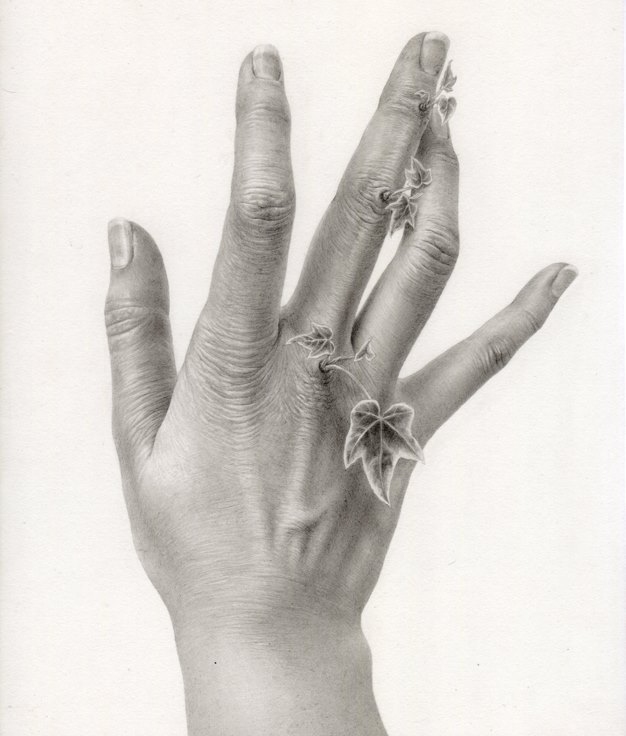
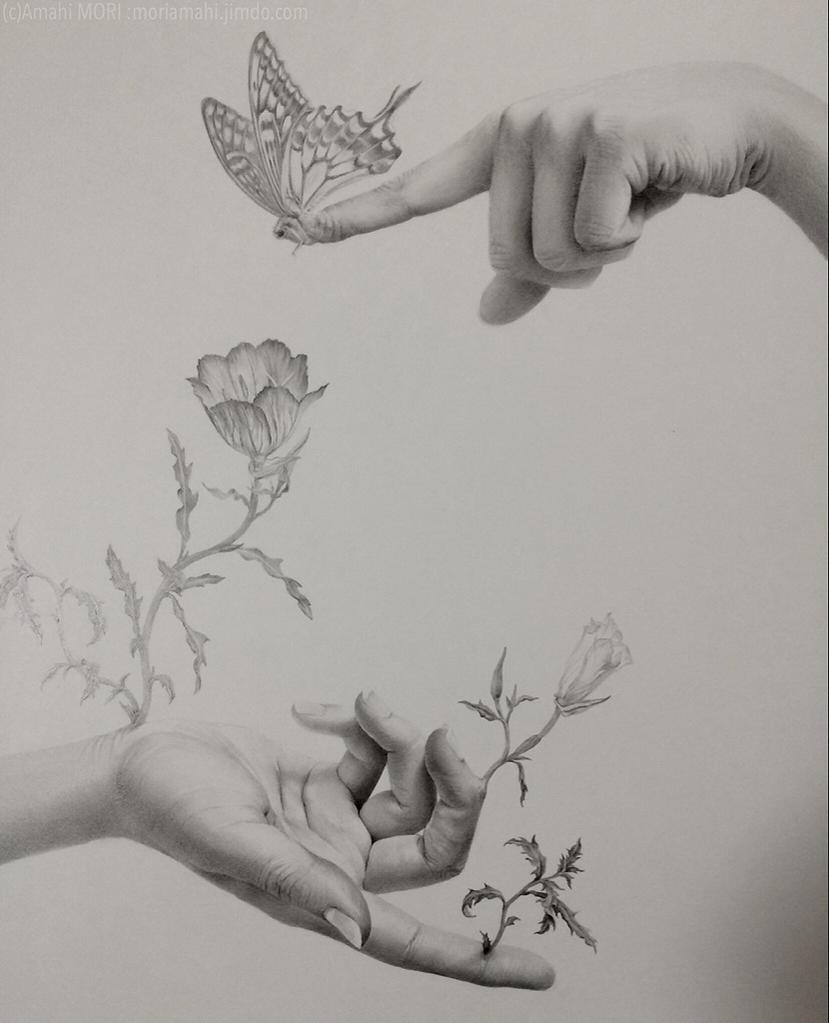
When you appease the social media ‘censorship police’ by blurring specific body parts prior to posting your artwork online, do you feel a bit heartbroken? Is it surreal to gaze at a visually mutilated version of something that initially emerged from the purest part of your creative heart?
It definitely pains me. I don’t think that nudity in artwork is obscene or should be hidden. I feel like I’m being told that if I don’t censor my art, I won’t have the privilege of sharing it with others. I’m not drawing pornography, though – my art isn’t even erotic.
Artwork ideas involving nature and women constantly spring forth from my mind like a fountain.
Is it surprising to you that the U.S. – home to racy Hollywood movies and a thriving internet porn industry – is so prudish about displaying nude figurative art on social networking platforms?
Yes, I’m certainly surprised. The actresses in Hollywood movies are quite beautiful, sexy, and the dresses that they wear typically expose a lot of skin. This brings to mind the irony of when Japanese anime was first broadcast in the United States. A character with an exposed bust was edited so that her breasts were blurred.
What is the connection between the various human, botanical, and insect life forms that you depict in your work?
I am paying homage to all living things in my art. The human figures that I draw are pure life forms that co-exist equally with plants and insects. They are meant to be organisms that contain hidden personal information.

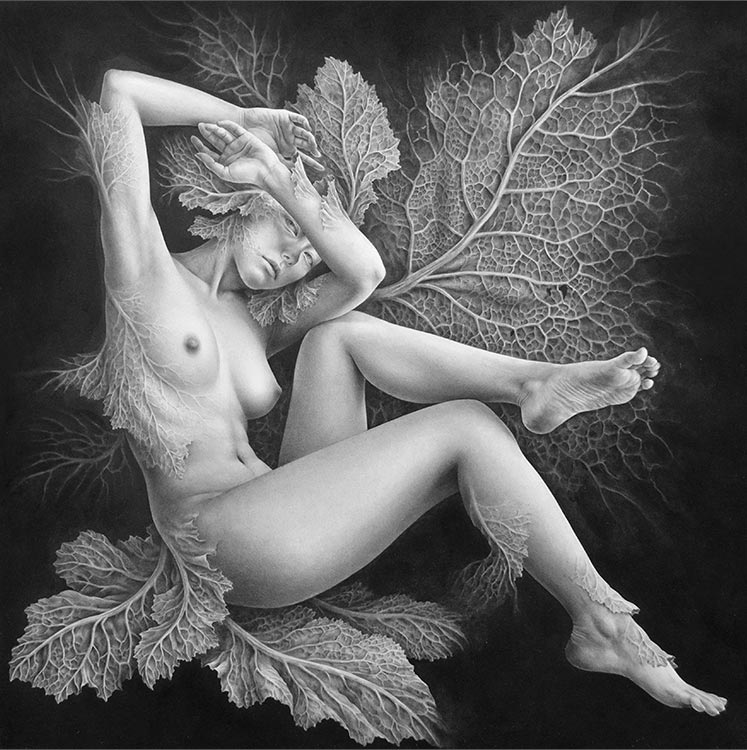
Throughout your portfolio, various botanical elements are fused to the female form. Fittingly, pollinators are also integral to the world that you’ve created. Your art repeatedly conveys the fact that the body is a life-nurturing vessel, even after it has expired. How did depicting the cycle of life and death become your signature theme?
What really moved my soul is realizing that I exist due to the myriad cycles of life and death in the natural environment. That is why my art revolves around mother nature’s creatures great and small.
Growing up in Japan – which is rich in botanical and wildlife wonders – triggered my love for natural creatures and reverence for the perfect laws of nature. Trees don’t just grow in the forest. Insects don’t just blindly fly around flowers. Blossoms aren’t just beautiful.
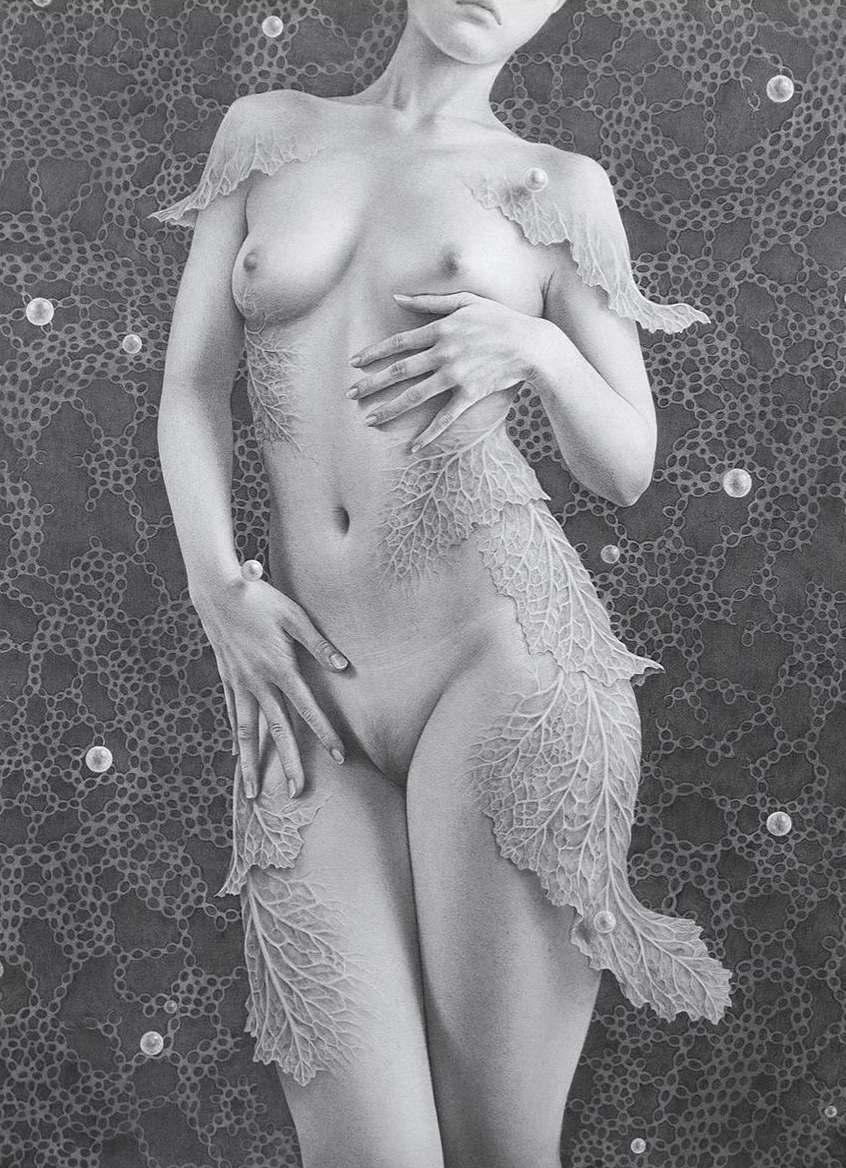
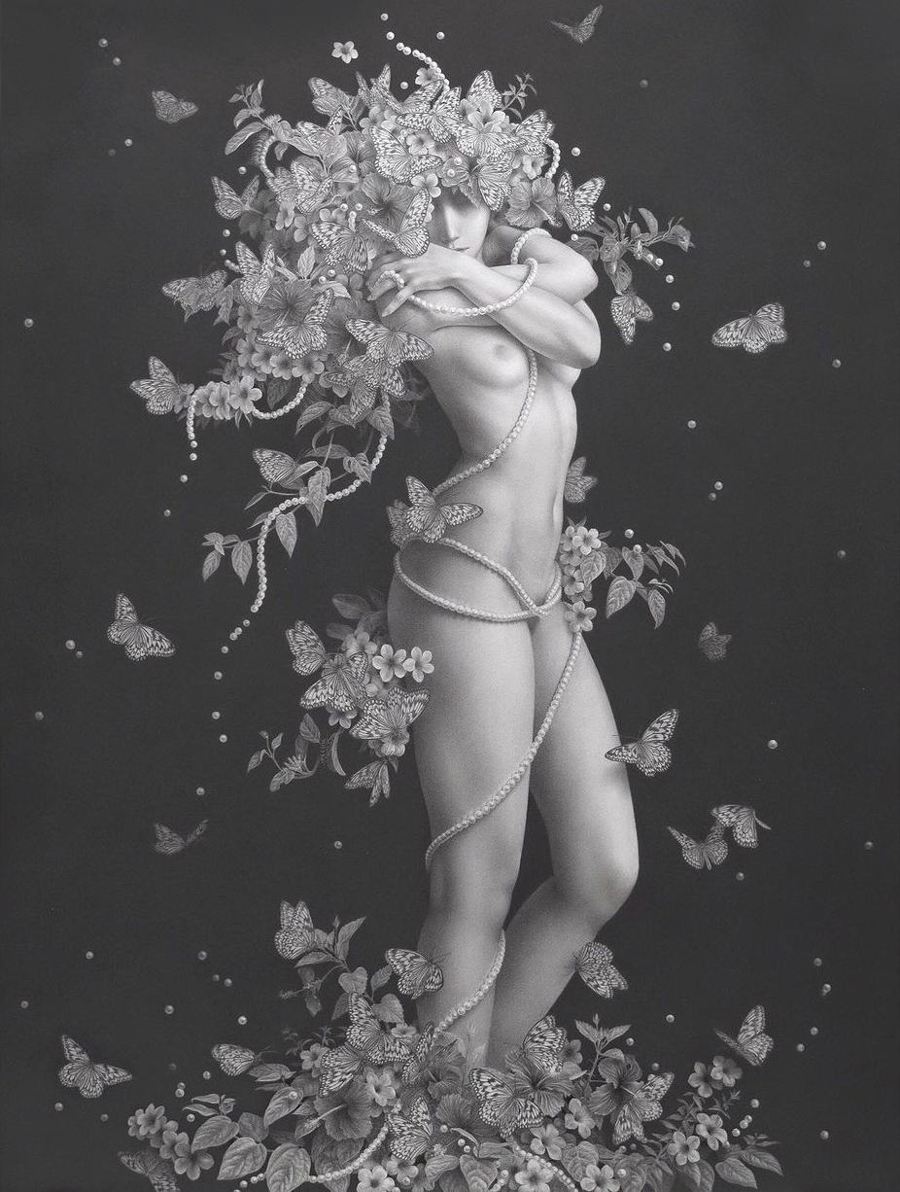
Through the production of my artwork, perhaps I am acknowledging that I do exist at this moment in time. It serves as a reminder that I must live my life as responsibly as I can.
You have explored the hybridization of nature with the female form for many years now, always conjuring fresh ways to depict it. Is this still an exciting topic for you or is a significant thematic shift on the horizon?
I have also created motifs that are separate from the female body, but artwork ideas involving nature and women constantly spring forth from my mind like a fountain. That subject matter will continue to be an important part of my work.
We experience many ‘states’ in daily life. Tibetans refer to that phenomenon as bardo – a gap in time before we transition to the next experience. Symbolically, your drawings seem to be laden with bardo. Is that the result of your cultural background or your personal philosophy?
Yes, I certainly incorporate bardo into my artwork because it parallels my Japanese culture and personal philosophy. It’s a natural extension of my heritage and the belief systems that are engrained within me, such as Buddhism, the cycle of life and death, etc.
Does creating art provide you with validation of your existence?
Through the production of my artwork, perhaps I am acknowledging that I do exist at this moment in time. It serves as a reminder that I must live my life as responsibly as I can.
It is true that I use my own body as reference material for my artwork, but I view my physical form as a tool that enables me to manifest my artwork. The figure in my completed work is not the visual equivalent of my own body but rather like a stranger’s body.
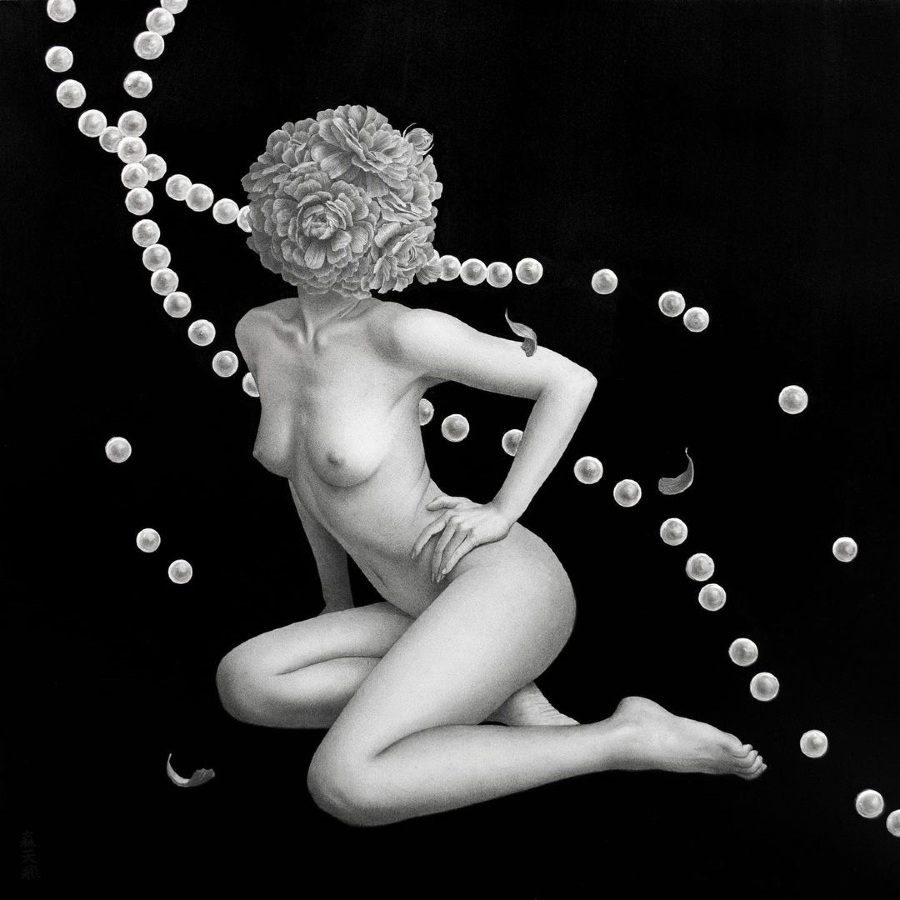

You use pearls as a recurring compositional element. Additionally, you rely on them to impart luster to your works of art (via powdered pearl pigment). Is there some cultural significance to incorporating that gift of the sea into the fruits of your creative labors?
My interest in drawing pearls and using pearl pigments in my art stems from my own personal interpretations and meanings. By depicting a series of pearls, I am conveying the connection, chain, or circle of life.
I use pearl pigments in my art to add depth and aesthetic appeal to my work. The pigments supplement the material weaknesses of works drawn on paper. Additionally, the beautiful pearlescent luster really complements graphite pencils.
There are so many beautiful things in this life that we tend to take for granted – even the naturally lacy quality of leaves. How did that idea occur to you?
I started using leaf veins as a motif around 2014. I was already covering my head with flowers but kept trying to figure out how other ways to integrate the human body with plants. While exploring many art books, Zdzisław Beksiński stood out in my mind since he often painted mysterious patterns that look like spider webs or blood vessels. That made me think about the shape of leaf veins and the similarity of blood vessels in the human body. That’s what inspired me to create leaves look like human skin.
Pencils and monochromatic acrylic gouache enable me to depict the nude figure in a straightforward manner, purely as a body rather than as a sexual object.
Capturing the realistic appearance of leaf veins likely requires a great deal of labor, yet you return to that motif time and time again. Do you purposefully seek out imagery that is artistically challenging to render?
Yes, I intentionally challenge myself, otherwise what I create would merely just be a sketch. When it comes to capturing the most subtle details, pencil is a very appealing artistic tool to use.
Was treading the path of an artist written in the stars for you, even at a very young age?
I was a child who loved to draw every day – I never got tired of it! – and decided early in my life to become an artist. My parents had no doubt that it was the right path for me. Of course, I hope to soon be able to live as a full-time artist and build a partnership with a trustworthy and knowledgeable gallerist.
I believe that capturing the many subtleties of mother nature’s creatures is akin to making sense of the mystery of life.
You’ve commented in the past that – while you can claim that you are living and breathing – feeling it through the human experience is what legitimizes it. How does your art convey this philosophy?
Rather than creating a self-portrait, I’m self-projecting the human figure that I draw in my artwork. It’s difficult to put into words precisely why I’m drawing it…perhaps there’s no real answer. It’s like asking, “Why am I alive?” It’s hard for me to say why.
You have spent many, many years refining your craft. Are there a few ‘golden truths’ in your artistic practice that continue to stand the test of time?
Believing in one’s talent and never giving up are both really important, plus possessing passion for one’s artwork. In my case, every moment that I am engaged in the drawing process is the most important moment of my life.
